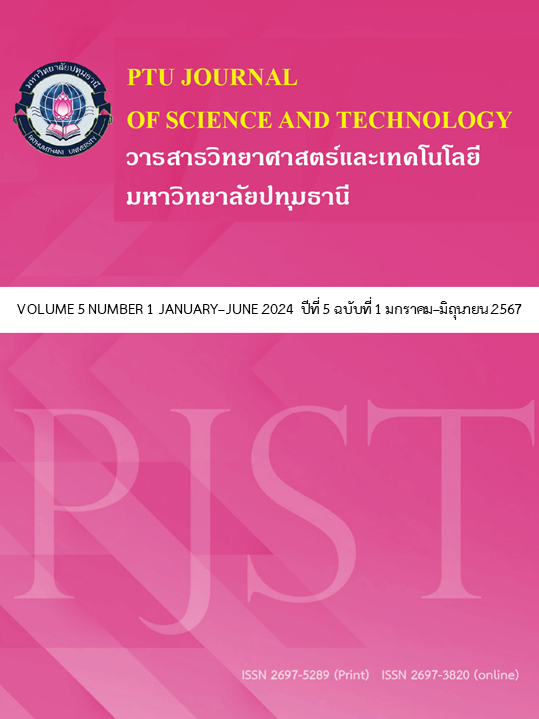ประสิทธิผลของการฝึกด้วยกระจกเงาในผู้ป่วยโรคหลอดเลือดสมอง ที่ได้รับการฟื้นฟูรยางค์ล่าง โรงพยาบาลสิชล จังหวัดนครศรีธรรมราช
Main Article Content
บทคัดย่อ
การศึกษานี้เป็นแบบกึ่งทดลอง มีวัตถุประสงค์เพื่อศึกษาประสิทธิผลของการใช้เทคนิคกระจกบำบัดฟื้นฟูรยางค์ส่วนล่างในผู้ป่วยโรคหลอดเลือดสมอง โดยมีกลุ่มตัวอย่าง คือ ผู้ป่วยด้วยโรคหลอดเลือดสมองที่มารับบริการ ณ โรงพยาบาลสิชล จำนวน 30 ราย แบ่งออกเป็น 2 กลุ่ม ประกอบด้วย กลุ่มทดลอง 15 ราย และกลุ่มควบคุม 15 ราย ในกลุ่มทดลองดำเนินการให้กิจกรรมด้วยกระจกเงา จำนวน 3 ท่า ได้แก่ ท่ากระดกข้อเท้าขึ้นลง ท่ากางและหุบขาท่างอเข่าและสะโพก เป็นระยะเวลา 4 สัปดาห์ ส่วนในกลุ่มควบคุมดำเนินการให้กิจกรรมบำบัดแบบปกติตามมาตรฐานการฟื้นฟูผู้ป่วยโรคหลอดเลือดสมอง รวบรวมข้อมูลด้วยแบบสอบถามตามตัวแปรที่เกี่ยวข้อง ได้แก่ ปัจจัยส่วนบุคคล ความรู้ การรับรู้ความรุนแรงของโรคหลอดเลือดสมองต่อความความสามารถในการเคลื่อนไหวของผู้ป่วยโรคหลอดเลือดสมองและการทำกิจวัตรประจำวัน วิเคราะห์ข้อมูลด้วยสถิติเชิงพรรณนา และวิเคราะห์ความสัมพันธ์ด้วยสถิติทีคู่ และการวิเคราะห์ความแปรปรวนทางเดียวแบบวัดซ้ำ ผลการศึกษา พบว่า หลังการดำเนินการให้กิจกรรมฟื้นฟูสภาพร่างกายรยางค์ส่วนล่างด้วยกระจกเงามีความสามารถในการทำกิจวัตรประจำวันเพิ่มขึ้นอย่างมีนัยสำคัญทางสถิติที่ระดับ p-value < 0.05 ในส่วนการประเมินความสามารถในการเคลื่อนไหวของผู้ป่วยโรคหลอดเลือดสมอง ด้านการเคลื่อนไหวด้านล่างและการเคลื่อนไหวขั้นพื้นฐานมีการเคลื่อนไหวได้ดีขึ้นหลังการฟื้นฟูด้วยกระจกเงาอย่างมีนัยสำคัญทางสถิติที่ระดับ p- value <0.05 ในขณะที่การเคลื่อนไหวของแขนมีการเคลื่อนไหวไม่แตกต่างกันหลังการฟื้นฟู การฟื้นฟูสภาพผู้ป่วยโรคหลอดเลือดสมองจึงควรมีการฟื้นฟูต่อเนื่อง ร่วมกับการดูแลผู้ป่วยที่บ้านจะสามารถให้ผู้ป่วยฟื้นฟูสภาพร่างกายได้ดีขึ้น
Article Details

อนุญาตภายใต้เงื่อนไข Creative Commons Attribution-NonCommercial-NoDerivatives 4.0 International License.
ความคิดเห็นและข้อเสนอแนะใดๆ ที่นำเสนอในบทความเป็นของผู้เขียนแต่เพียงผู้เดียว โดยบรรณาธิการ กองบรรณาธิการ และคณะกรรมการวารสารวิทยาศาสตร์และเทคโนโลยี มหาวิทยาลัยปทุมธานี ไม่ได้มีส่วนเกี่ยวข้องแต่อย่างใด มหาวิทยาลัย บรรณาธิการ และกองบรรณาธิการจะไม่รับผิดชอบต่อข้อผิดพลาดหรือผลที่เกิดจากการใช้ข้อมูลที่ปรากฏในวารสารฉบับนี้
เอกสารอ้างอิง
ถกลวรรณ บุญเต็ม, อ้อมแก้ว นิยมวัน, จีรนุช กองเมืองปัก, จารุวรรณ สุขศรีศิริวัชร. (2565). ผลของกระบวนการเยี่ยมบ้านและฟื้นฟูสมรรถภาพผู้ป่วยโรคหลอดเลือดสมองระยะกลาง ในอำเภอเมือง จังหวัดสุรินทร์. วารสารการแพทย์โรงพยาบาลศรีสะเกษ สุรินทร์ บุรีรัมย์ ปีที่ 37 ฉบับที่ 3 หน้า 519-29
ธัญญารัตน์ วงค์ชนะ (2564). ปัจจัยที่ส่งผลต่อพฤติกรรมการป้องกันโรคหลอดเลือดสมองของผู้ป่วยความดันโลหิตสูงที่ควบคุมไม่ได้ อำเภอเมือง จังหวัดพิษณุโลก.วิทยานิพนธ์หลักสูตรสาธารณสุขศาสตรมหาบัณฑิต.
มหาวิทยาลัยนเรศวร
บุญรัตน์ โง้วตระกูล (2560). การเพิ่มความแข็งแรงของกล้ามเนื้อขาและความเร็วในการลุกขึ้นยืน โดยใช้โปรแกรมควบคุมจินตภาพการเคลื่อนไหวร่วมกับการออกกำลังกายในผู้สูงอายุ: การศึกษาคลื่นไฟฟ้ากล้ามเนื้อและคลื่นไฟฟ้าสมอง. ดุษฎีนิพนธ์ วิทยาลัยวิทยาการวิจัยและวิทยาการปัญญา มหาวิทยาลัยบูรพา.
ปรีดา สังข์สว่าง. (2563). ผลของการฟื้นฟูสมรรถภาพการเดินด้วยขาเทียมที่มีต่อความสามารถในการเคลื่อนไหวของผู้ป่วยอัมพาตครึ่งซีกที่พิการขาขาดในโรงพยาบาลนครปฐม. วารสารวิทยาลัยราชสุดา ปีที่ 17 ฉบับที่ 2 หน้า 2-17
ผกามาศ พิริยะประสาธน์, กรอนงค์ ยืนยงชัยวัฒน์, นพพล ประโมทยกุล, กฤษณา ครุฑนาค. (2562). ผลของการทำกายภาพบำบัดที่บ้านในผู้ป่วยโรคหลอดเลือดสมองระยะเรื้อรังที่ไม่ได้รับการฟื้นฟูแล้ว: การศึกษาเบื้องต้นThammasat Medical Journal, Vol. 19 Supplement August 2019. หน้า 48-56
โรงพยาบาลสิชล. (2566). เวชระเบียน: ผู้ป่วยโรคหลอดเลือดสมอง ปะจำปีงบประมาณ พ.ศ. 2565. นครศรีธรรมราช
วรรณา บุญสวยขวัญ, อมรรัตน์กลับรอด. (2565). ปัจจัยที่มีความสัมพันธ์ต่อระยะเวลาการมารับการรักษาของผู้ป่วยโรคหลอดเลือดสมองในระยะเฉียบพลัน งานอุบัติเหตุฉุกเฉิน โรงพยาบาลเชียรใหญ่ . วารสารศาสตร์สุขภาพและการศึกษา ปีที่ 2 ฉบับที่ 2 หน้า 61-75
สมพร สังขรัตน์ สุรีพร อุทัยคุปต์ มทิตา แก้วสุทธิ. (2016). ความน่าเชื่อถือภายในและระหว่างผู้ประเมินการใช้แบบประเมิน Stroke Rehabilitation Assessment of Movement (STREAM). Journal of Associated Medical Science. Vol. 50 No.1 January 2017. หน้า 71-86
สำนักงานกองทุนสนับสนุนการสร้างเสริมสุขภาพ (สสส) (2555). กรมควบคุมโรครณรงค์วันอัมพาตโลก ปี 2555. สืบค้นเมื่อ 6 สิงหาคม 2566. เข้าถึงได้จาก https://shorturl.at/650Aj
Bloom, B. M. (1968). Learning for Mastery. Center for the Study of Evaluation of Instructional Programs, 1, 1-12
Buchner, J. (2010), Bacterial Hsp90 – desperately seeking clients. Molecular Microbiology, 76: 540-544. https://doi.org/10.1111/j.1365-2958.2010.07140.x
Cohen, J. (1977). Statistical Power Analysis for the Behavioral Sciences (Revised Ed.)
Health data center. (2566). การป่วยด้วยโรคไม่ติดต่อที่สำคัญ: อัตราการป่วยด้วยโรคหลอดเลือดสมอง. สืบค้นเมื่อ 2 สิงหาคม 2566 เข้าถึงได้จากhttps://hdcservice.moph.go.th/hdc/reports/report.php?&cat_id=6a1fdf282fd28180eed7d1cfe0155e11&id=3092c3c3250ae67155f7e134680c4152
Health data center. (2566). การป่วยด้วยโรคไม่ติดต่อที่สำคัญ: อัตราการป่วยด้วยโรคหลอดเลือดสมอง เขตสุขภาพที่ 11 ปีงบประมาณ 2565. สืบค้นเมื่อ 2 สิงหาคม 2566 เข้าถึงได้จากhttps://hdcservice.moph.go.th/hdc/reports/report.php?&cat_id=6a1fdf282fd28180eed7d1cfe0155e11&id=3092c3c3250ae67155f7e134680c4152
Inpha S. (2014). Guide to patient receive artificial joint replacement surgery. Faculty of Nursing Mahidol University
Ministry of Public Health. (2009). Professional Standards for the art of healing in Occupational Therapy. Bureau of Sanatorium and Art of Healing. Department of Health Service Support. Nonthaburi
Moseley GL, Gallace A, Spence C. (2008). Is mirror therapy all it is cracked up to be? Current evidence and future directions. Pain 2008; 138: 7-10
Steenbergen B, Craje C, Nilsen DM, Gordon AM. (2009). Motor imagery training in hemiplegic cerebral palsy: a potentially useful therapeutic tool for rehabilitation. Dev Med Child Neurol 2009; 51: pp. 690-696.
Utrarachkij, N., Reecheeva, N., Siriratna, P., Thamronglaohaphan, P., & Chira-adisai, W. (2016). Functional Outcomes of Upper and Lower Limbs after Rehabilitation Program in Sub-acute and Chronic Stroke patients at Ramathibodi Hospital. Thai Journal of Rehebil Med, 26(2), pp.47-53.
Yavuzer G, Selles R, Sezer N, Sütbeyaz S, Bussmann JB, Köseoglu F, et al. (2008). Mirror therapy improves hand function in subacute stroke: a randomized controlled trial. Arch Phys Med Rehabil 2008; 89: pp. 393-8.


